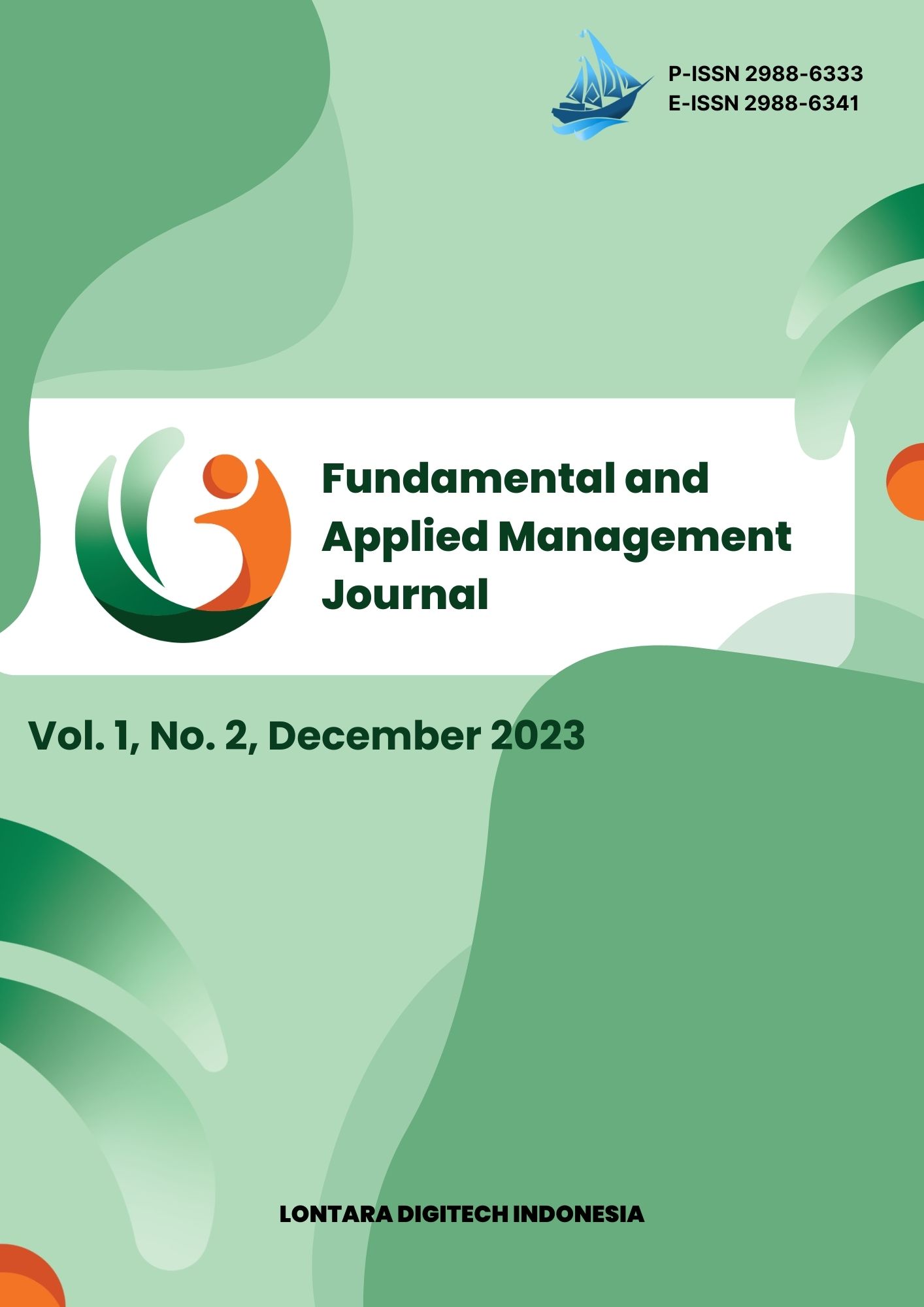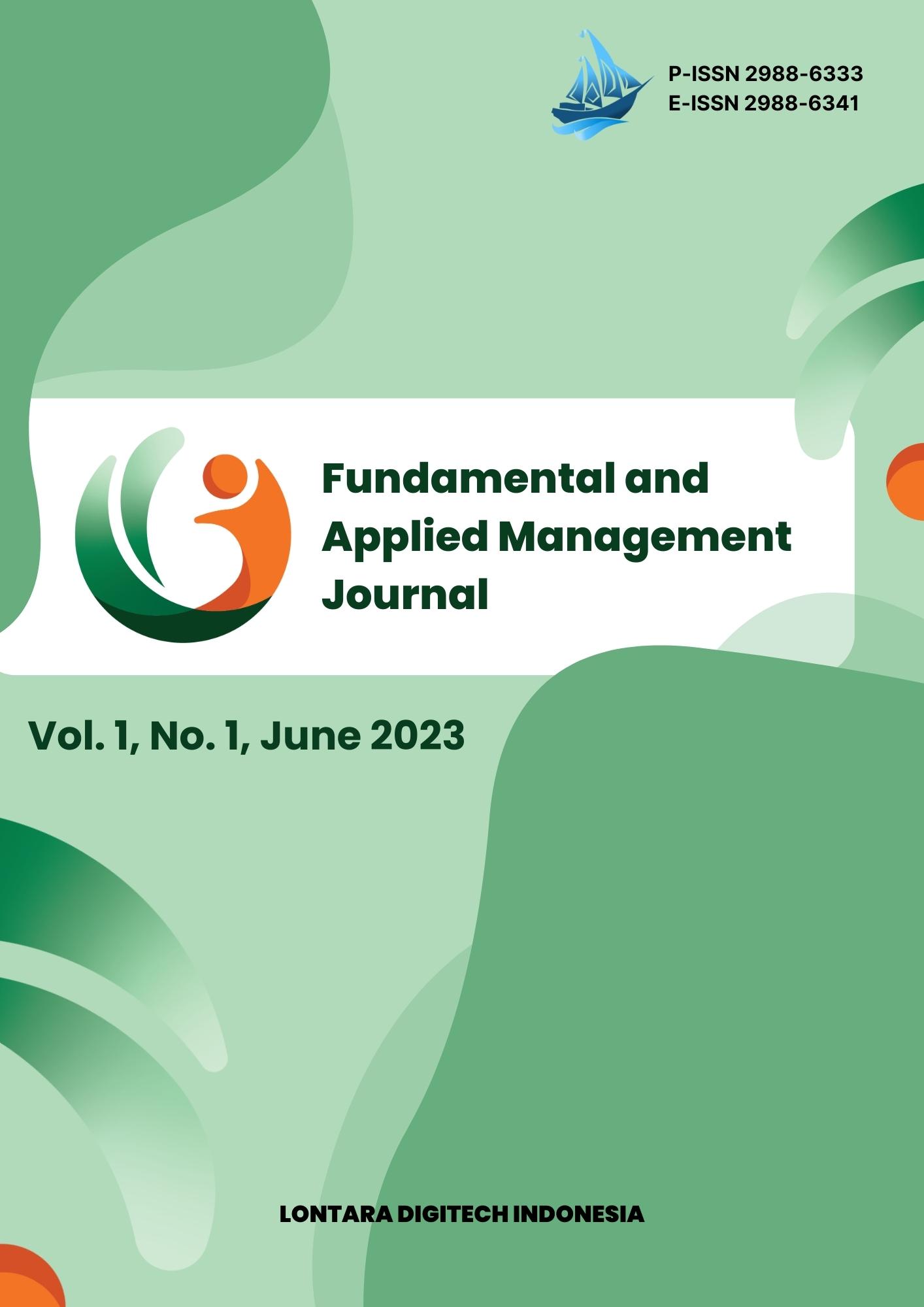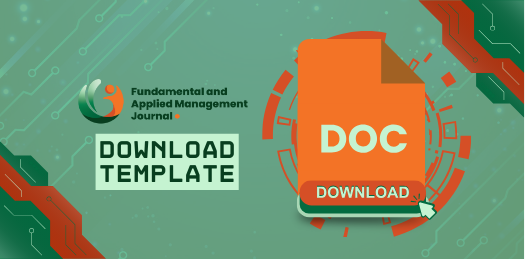Analysis of the Effect Current Ratio on Return on Assets at PT Astra Otoparts TBK.
DOI:
https://doi.org/10.61220/famj.v1i2.202308Keywords:
Current Ratio, Return on AssetsAbstract
This study makes an important contribution in understanding the relationship between current ratio and return on assets at PT Astra Otoparts Tbk. Through the use of a simple linear regression test on financial statement data for the period 2015-2022, this study intends to explain the extent to which the current ratio affects the company's return on assets. Current ratio, as the independent variable, is used as an indicator of the company's ability to meet its short-term obligations, while return on assets, as the dependent variable, reflects the company's level of profitability. The results show that, although the current ratio has a positive influence on return on assets, the influence is not statistically significant. In other words, the increase in current ratio does not contribute significantly to the increase in return on assets at PT Astra Otoparts Tbk. The findings can provide valuable insights for company management in designing financial strategies, especially in terms of managing short-term assets and liabilities. In the context of the automotive and spare parts industry in Indonesia, where PT Astra Otoparts Tbk operates, an in-depth understanding of the factors that influence return on assets is crucial. The results of this study can serve as a basis for similar companies to evaluate and improve their financial performance, optimize asset allocation, and manage short-term liabilities more effectively. Further research and the integration of other factors in financial analysis can help shape a more holistic and sustainable business strategy amidst changing market dynamics.
References
Amping, F., Hafied, I., & Iskandar, S. (2020). Laporan Keuangan Untuk Mengukur Kinerja Keuangan Pada Inspektorat Provinsi Sulawesi Selatan. Accounting Journal, 1(2), 238-244.
Bado, B., Hasan, M., & Isma, A. (2022). Pengaruh Literasi Keuangan dan Pergaulan Teman Sebaya Terhadap Perilaku Konsumtif Melalui Locus of Control Sebagai Variabel Intervening. Jurnal Pendidikan Tambusai, 7(2), 15604-15623. https://doi.org/10.31004/jptam.v7i2.8843
Cuandra, F. (2023). Optimasi Sistem Manajemen Operasional di Perusahaan Andilaman. AsbaK: Jurnal Ilmu Ekonomi dan Bisnis, 1(1), 1-8.
Harahap, Sofyan Syafri. 2015. Laporan Keuangan. Cetakan kedua belas. Jakarta: PT RajaGrafindo Persada.
Hasibuan, A. F. H., Deli, N. P., Hudiya, Y., & Amelia, A. (2023). Analisis Laporan Keuangan Syariah dan Fungsinya dalam Perbankan Syariah. Ecobankers: Journal of Economy and Banking, 4(2), 146-153.
Eliana., Isma, A., Astuti, I. N., Ivana, F., Kesuma, I., & Mediyanti, S. (2023). Pengenalan Pembuatan Laporan Keuangan pada Pekerja Migran Indonesia (PMI) Berbasis Digital. TEKNOVOKASI: Jurnal Pengabdian Masyarakat, 1(3), 195-204. https://doi.org/10.59562/teknovokasi.v1i3.523
Kurniawati, C. R. (2022). Pengaruh current ratio, total asset turnover, dan debt to equity ratio terhadap return on asset. Jurnal Cendekia Keuangan, 1(2), 101. https://doi.org/10.32503/jck.v1i2.2832
Marginingsih, R. (2017). Penilaian kinerja perusahaan dengan menggunakan analisa rasio keuangan pada perusahaan telekomunikasi di Indonesia. Cakrawala: Jurnal Humaniora Bina Sarana Informatika, 17(1). https://doi.org/10.31294/jc.v17i1.1840
Mutiah, R. A. (2019). Penerapan Penyusunan Laporan Keuangan pada UMKM Berbasis SAK EMKM. International Journal of Social Science and Business, 3(3), 223-229. https://doi.org/10.23887/ijssb.v3i3.21000
Pane, J. K. B., Meliyani, M., Pandia, D. T. B., Sihombing, S. W., & Herosian, M. Y. (2021). Pengaruh dar, roa, cr terhadap harga saham di perusahaan sektor industri barang konsumsi yang terdaftar di bei periode 2015-2019. Ecobisma (Jurnal Ekonomi, Bisnis Dan Manajemen), 8(2), 35-45. https://doi.org/10.36987/ecobi.v8i2.2076
Pratiwi, L. L. (2022). Implementasi Blockchain Pada Akuntansi dan Audit di Indonesia. Fair Value: Jurnal Ilmiah Akuntansi Dan Keuangan, 4(6), 2185-2203. https://doi.org/10.32670/fairvalue.v5i01.873
Purwanti, A., Pesiwarissa, R. C., Nuridah, S., Isma, A., & Ardhiyansyah, A. (2023). Pengaruh Kualitas Sistem Akuntansi terhadap Pengendalian Internal dalam Rangka Pemasaran Berkelanjutan: Studi Kasus pada Industri Retail di Provinsi Jawa Barat. Jurnal Aktiva: Riset Akuntansi dan Keuangan, 5(2), 68-80. https://doi.org/10.52005/aktiva.v5i2.186
Putri, D., & Nugroho, R. (2022). The Effect of Liquidity Ratios on Profitability in the Automotive Industry Listed on the IDX. International Journal of Business and Management Review, 10(4), 15–27
Rambe, I., & Datuk, B. (2021). Return On Assets: Debt To Asset Ratio And Current Ratio In Companies Listed On The Indonesia Stock Exchange. International Journal of Economic, Technology and Social Sciences (Injects), 2(1), 274-288. https://doi.org/10.53695/injects.v2i1.391
Rosie, L. N., & Idayati, F. (2018). Balanced Scorecard Dalam Pengukuran Kinerja PT Kereta Api Indonesia (Persero) DAOP VIII Surabaya. Jurnal Ilmu dan Riset Akuntansi (JIRA), 7(5).
Simanjuntak, R., & Siregar, F. (2021). Liquidity and Profitability Analysis: Evidence from Indonesian Manufacturing Companies. Jurnal Akuntansi Multiparadigma, 12(3), 499–512
Siregar, S. A. (2022). Pengaruh current ratio, debt to assets ratio, dan total asset turn overterhadap return on asset pada pt. ace hardware indonesia tbk tahun 2014-2021. Balance: Jurnal Akuntansi Dan Manajemen, 1(1), 100-110. https://doi.org/10.59086/jam.v1i1.19
Sudana, I Made. 2015. Teori dan Praktik Manajemen Keuangan Perusahaan. Edisi 2. Jakarta: Erlangga.
Susanto, H., & Wulandari, R. (2020). Financial Performance Evaluation Using Liquidity and Profitability Ratios in Emerging Market Firms. Asian Journal of Accounting Research, 5(2), 245–258
Widjaja, Y. R., Fajar, C. M., Bernardin, D. E. Y., Mulyanti, D., & Nurdin, S. (2018). Penyusunan Laporan Keuangan Sederhana Untuk UMKM Industri Konveksi. Jurnal Abdimas BSI: Jurnal Pengabdian Kepada Masyarakat, 1(1). https://doi.org/10.31294/jabdimas.v1i1.3183.g2016
Downloads
Published
Issue
Section
License
Copyright (c) 2023 Ikhyanuddin, Fatma Sarie (Author)

This work is licensed under a Creative Commons Attribution-ShareAlike 4.0 International License.













 Email: famj@lontaradigitech.com
Email: famj@lontaradigitech.com
